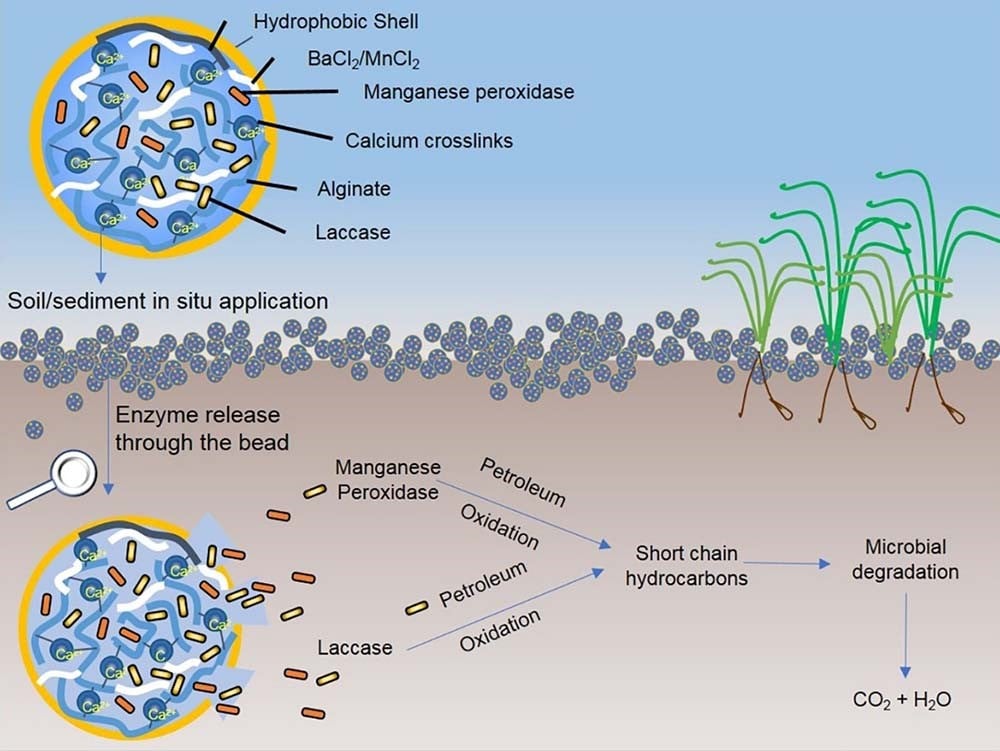Remediation Powered by Fungal Enzymes

Science can be really cool. And sometimes Mother Nature has the coolest solutions of all.
Environmental contamination is a problem across the country. But what if instead of excavating polluted soil or adding additional chemicals to destroy pollutants, metagenomics and proteomics could be used to demonstrate that naturally occurring microbes can eliminate contamination with limited human intervention?
If the appropriate bacteria are present and the conditions are right for them to thrive, in many cases microbes can handle the job on their own. But for some of the most complex contaminants, bacteria alone can’t take care of the problem. Fungi are needed.
Fungal enzymes have the unique ability to breakdown complex chemicals into smaller pieces that bacteria can then destroy. But the introduction of fungi into the environment presents additional challenges.
Non-native fungi cannot be added to a polluted area due to regulatory concerns and the consequences of introducing non-native species to sensitive ecosystems. And while the fungal enzymes can be safely introduced to contaminated sites, they deteriorate quickly and don’t survive long on their own in the environment.
“We have a unique capability to run a large-scale production of fungal enzymes by growing fungal matts in fermenters and collecting enzyme-rich culture liquids. However, application of crude enzymes does not provide a stable product,” said Kate Kucharzyk, Principal Research Scientist at Battelle. “We needed a way to protect these enzymes from chemical and physical factors that cause their degradation.”
Using previous experience with encapsulation technology, Battelle created a capsule to protect the enzymes, attract compounds of interest and slowly release the enzymes. Similar to capsules Battelle created to repair corrosion and effectively use bleach with cold water in laundry, the capsule protects an active agent and releases it when triggered by specific conditions in the environment.
“If a client names an active ingredient and a trigger, we can come up with potential solutions to meet their needs,” said Ram Lalgudi, Battelle Senior Research Scientist.
The capsule also is biodegradable and made from bio-based materials. In addition to being good for the environment, it has the added benefit of providing a carbon source for the microbes that continue to destroy the contamination after the fungal enzymes break it down into smaller molecules.
Application of the capsules does not require invasive processes that can harm an ecosystem. They can simply be applied to the surface of a contaminated area and tilled into the topsoil if needed.
Pilot-scale studies to validate that this technology can successfully remediate oil contamination in a real-world setting is underway. As the technology is shown to be effective, the team plans to expand it to other contaminants such as munition constituents.

BATTELLE UPDATES
Receive updates from Battelle for an all-access pass to the incredible work of Battelle researchers.